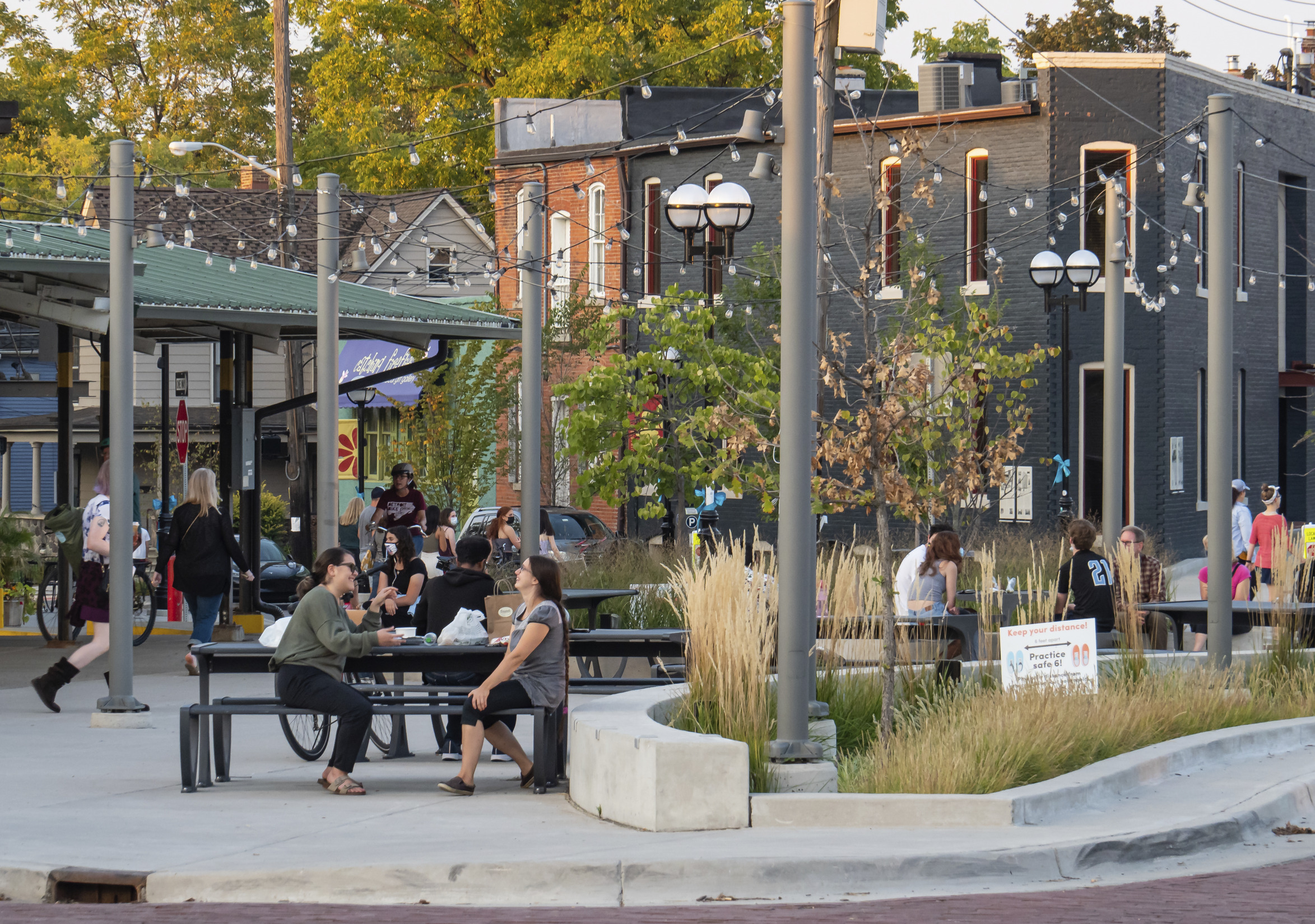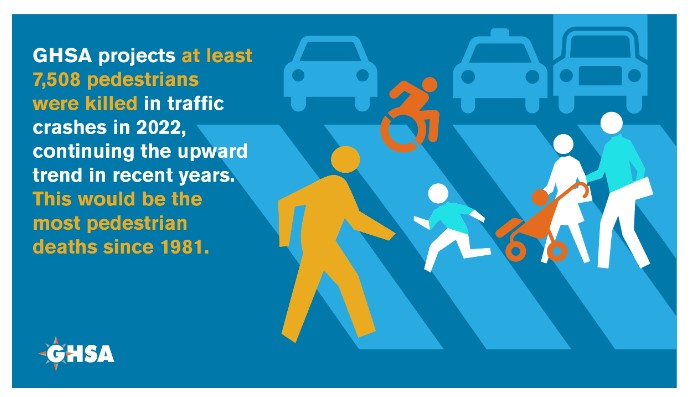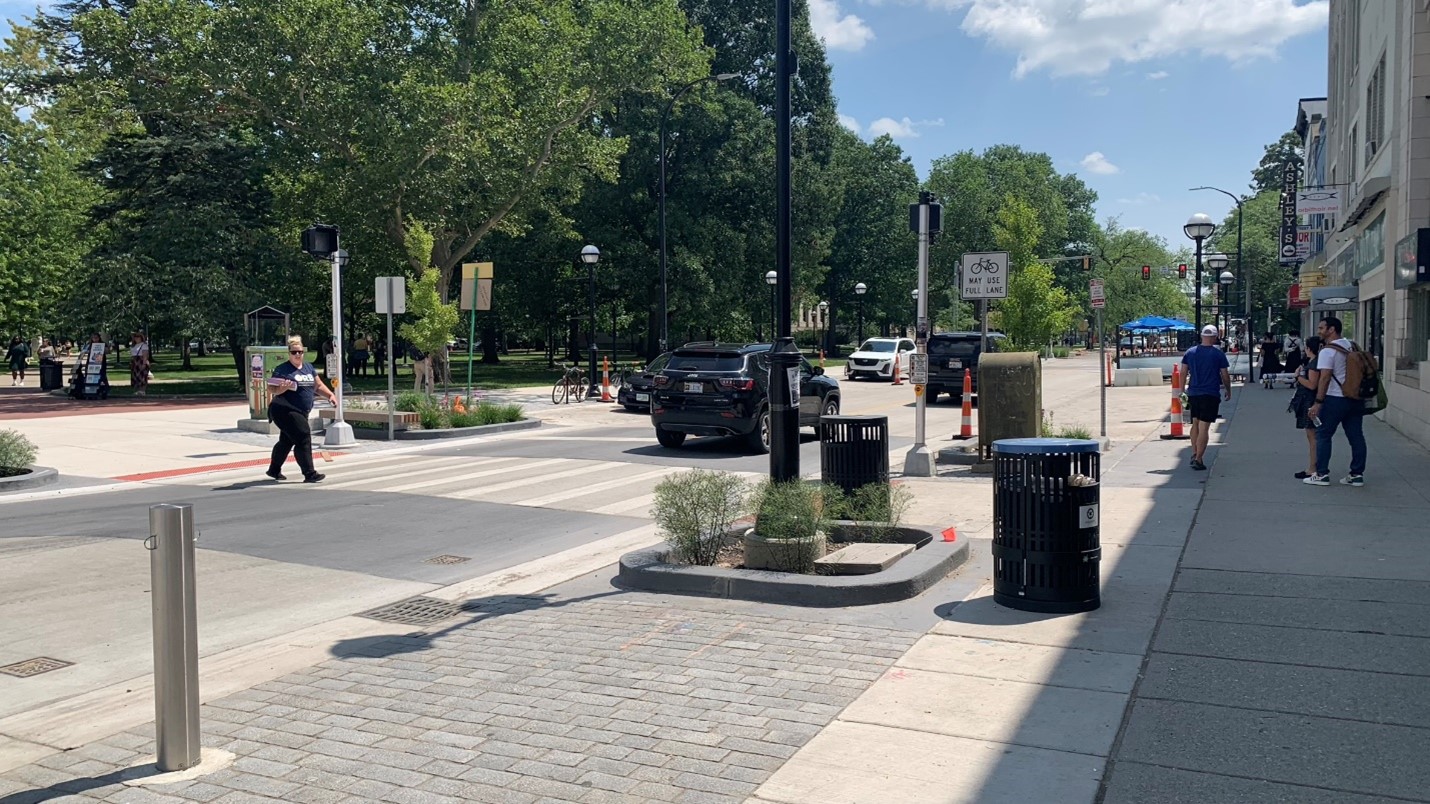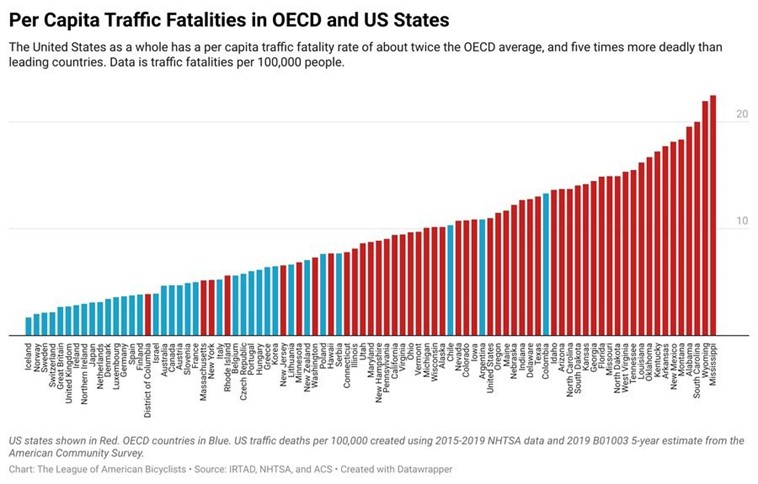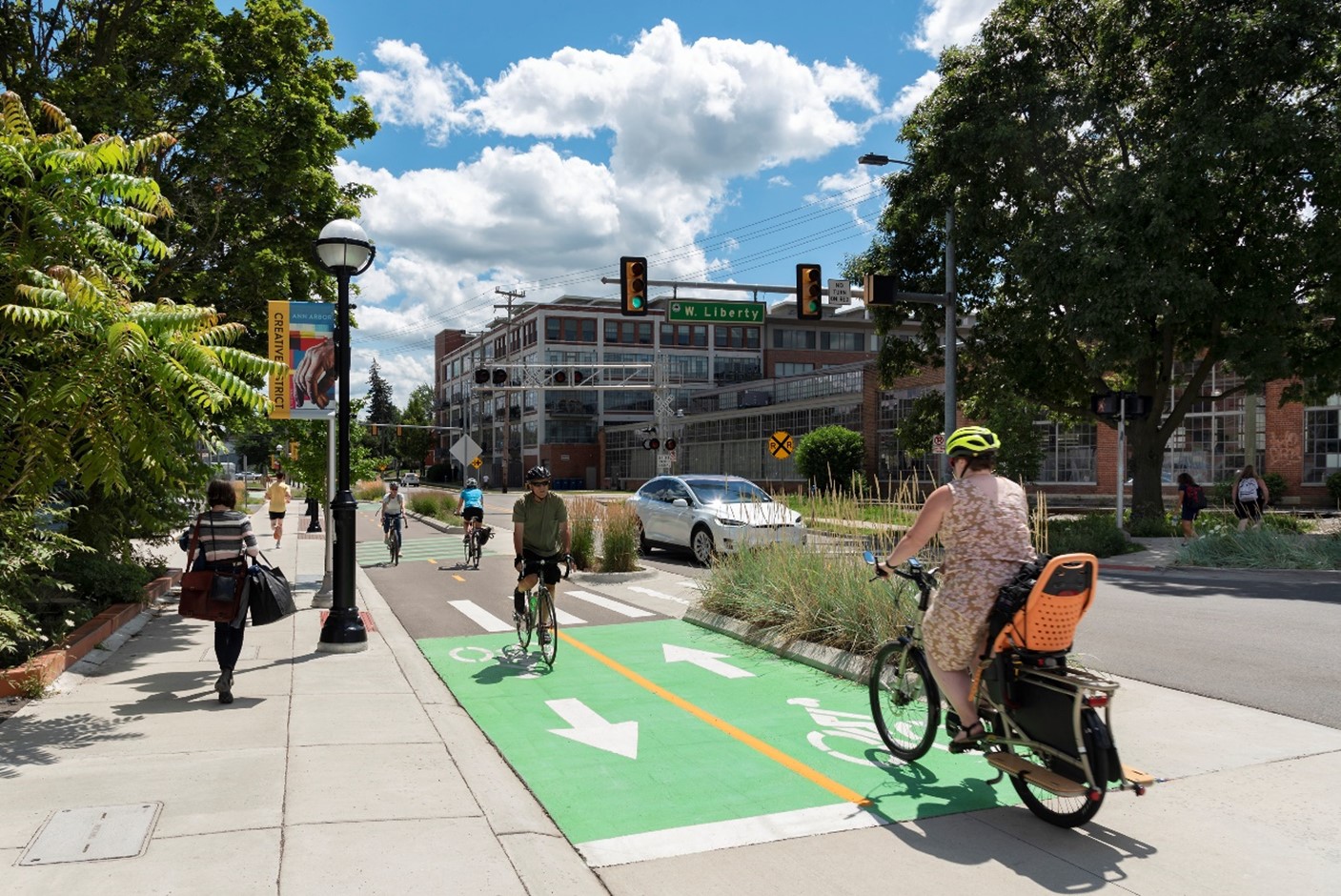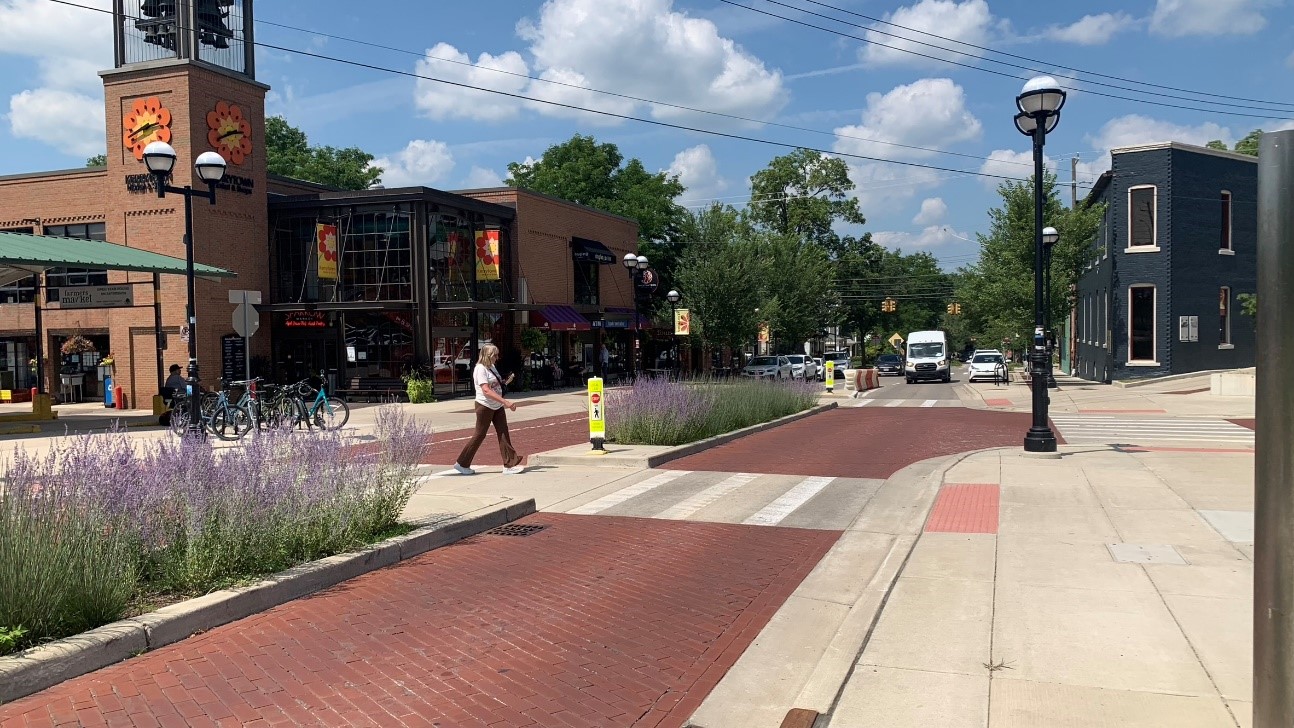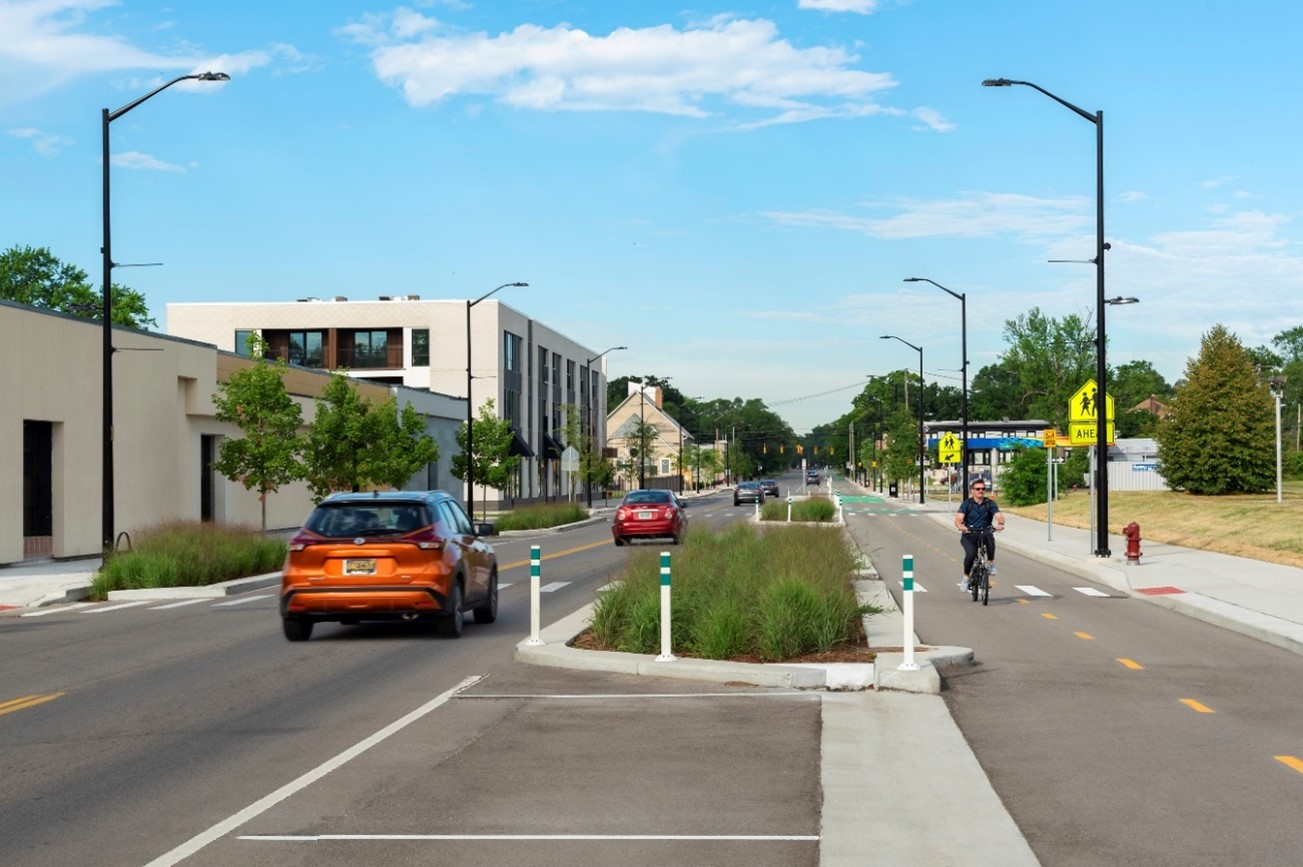The Road to Zero: Improving Pedestrian Safety Through Street Design
While news publications in the U.S. are not known for being fun or positive, you may have noticed a worrying trend when scrolling through headlines in recent months. These headlines focus on the numbers 7,508, 20, and 1981. 7,508 representing the estimated number of U.S. pedestrians to have been killed in traffic incidents in 2022, 20 being the average pedestrian deaths per day in this country, and these two numbers representing the most pedestrian deaths in a single year since 1981. These figures are from a report released earlier this year by the Governors Highway Safety Association (GHSA), but you may have seen them written about in publications like the New York Times, Bloomberg, CBS News, and other national news organizations.
A common narrative within these articles is the impact that street design has on vehicle speed and pedestrian safety, as opposed to driver negligence or lack of enforcement. While professionals who focus on mobility and urban infrastructure projects have known the significant role that street design plays in this issue, the American public is slowly but surely becoming more aware. This increases the responsibility on street and public space designers, but also presents a real opportunity for us to advance positive change and advocate for bold initiatives that will ultimately save thousands of lives in the coming years.
The recent decades-long rise in pedestrian deaths, and traffic deaths in general, is a uniquely American problem among the world’s comparably developed nations. Several factors have contributed to this problem including a car-centric culture established in the 1950s, the increase in average vehicle size over the last two decades, and a general hesitancy to implement pedestrian-oriented infrastructure projects by federal, state, and local agencies. Even if those same agencies have previously declared a commitment to programs lowering pedestrian deaths, like Vision Zero and others, they have historically underfunded these types of projects. However, due to the increased coverage and the public becoming more vocal about this issue, these same agencies have started to back up their commitments with real funding.
Each year, state and local agencies have been implementing more projects with a focus on pedestrian and cyclist infrastructure. In late 2021, the Biden administration enacted the Bipartisan Infrastructure Law. This authorized $5 billion over five years to projects that focus on making streets and roads safer for all users, through the Safe Streets and Roads for All (SS4A) grant program. This promising trend places designers like us in a unique position to not only design infrastructure oriented around pedestrians and cyclists, but to play a key role in public education, highlighting why these projects are so important and the impact they can have on everyone’s lives.
As designers we have two key responsibilities regarding pedestrian safety. First, to continue to design streets that protect and mitigate harm for all users. The most effective way to do that is to utilize design techniques that lower vehicle speed. Vehicle speed has been shown to be a significant indicator of whether a traffic incident will result in a fatality. Despite decades of transportation engineering philosophy focusing on increasing vehicle speed and maximizing their “Level of Service,” our focus must be on lowering vehicle speed in spaces where we want a safe mixed use of public space. In cities across Europe, there have been mandated decreases in speed limits, resulting in safer, less noisy, and less polluted streets. However, as many of us already know, speed limits and enforcement can only do so much. The physical design of the street itself must play a much larger role in how fast vehicles can move.
Our second responsibility is to be advocates and educate municipal representatives and the public on why more pedestrian-focused infrastructure is necessary. There will be pushback from all directions with each proposed project that eliminates space and speed for vehicles. Car owners will feel like their transportation options are becoming more limited, government officials will be too worried about the optics of decreasing vehicle lanes, and antiquated policies may still require traffic engineers in some transportation departments to work against lowering vehicle speeds and access due to the outdated car-centered philosophies mentioned earlier. It is our ethical obligation to utilize the information and data available to us to respond to this pushback and realize every opportunity for these live-saving projects to be implemented. Data from recently built bike and pedestrian projects in Ann Arbor, MI has shown the significant safety impacts of design that lowers vehicle speed. By slowing cars down and providing more space for active users, the percentage of cars who now stop for pedestrians crossing at these locations has increased from 48% to 97%. The percentage of severe crashes on these bikeway streets have decreased, despite more people biking.
As planners and designers, we must bring passionate conviction as well as data-driven insight to advance pedestrian-oriented design in the U.S. In tackling this pivotal, life-and-death issue, we should feel lucky to have such a unique and privileged role that can make a real difference in the safety and well-being of our communities across the nation.
